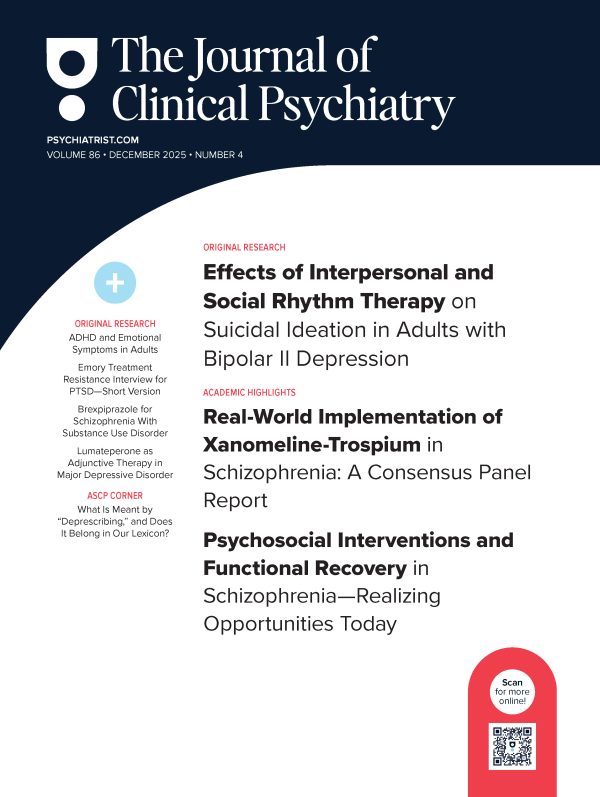Background: Early-onset psychosis is a symptomatically nonspecific and heterogeneous entity composed of several diagnoses. This study examined the dimensional structure of symptoms and the temporal stability of this structure during a 6-month follow-up.
Method: A principal component factor analysis of the Positive and Negative Syndrome Scale was conducted at baseline, 4 weeks, and 6 months in a sample of 99 first-episode psychotic patients (mean age = 15.5 years).
Results: The factor analysis produced a 5-dimension solution (Positive, Negative, Depression, Cognitive, Hostility) that explained 62.4% of the variance at baseline, 63.4% at 4 weeks, and 65.1% at 6 months. Negative dimension was the most consistent and stable over time and was predominant at baseline (23.9%) and at 4 weeks (25.7%). Depression was predominant at 6 months (31.1%).
Conclusions: There is a stable 5-dimension structure of symptoms in early-onset psychosis with varying predominance of symptoms over time. Negative symptoms are a core feature of psychosis and are thus important diagnostic criteria.
J Clin Psychiatry 2010;71(3):327-337
Submitted: November 4, 2008; accepted June 3, 2009.
Corresponding author: Marta Rapado-Castro, PhD, Adolescent Unit, Department of Psychiatry, Hospital General Universitario Gregorio Mara×±ón, C/ Ibiza 43, 28009 Madrid, Spain ([email protected]).
Members Only Content
This full article is available exclusively to Professional tier members. Subscribe now to unlock the HTML version and gain unlimited access to our entire library plus all PDFs. If you’re already a subscriber, please log in below to continue reading.
Please sign in or purchase this PDF for $40.00.
Already a member? Login


